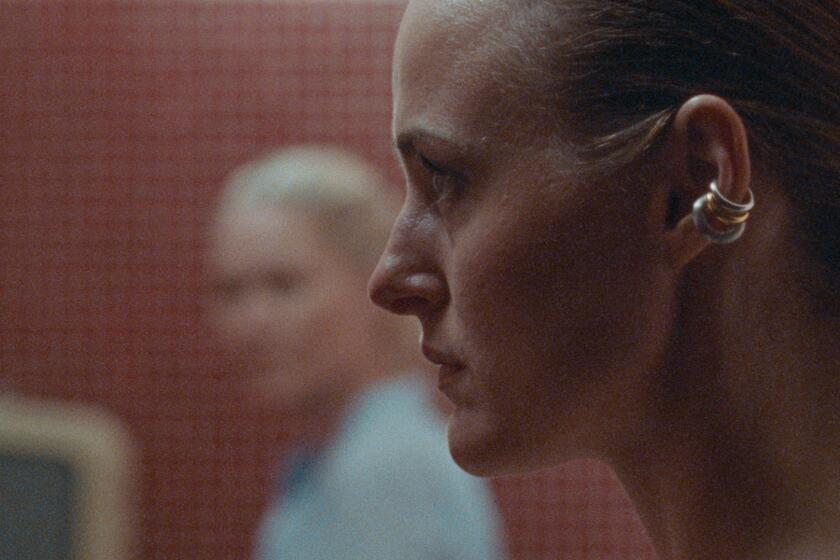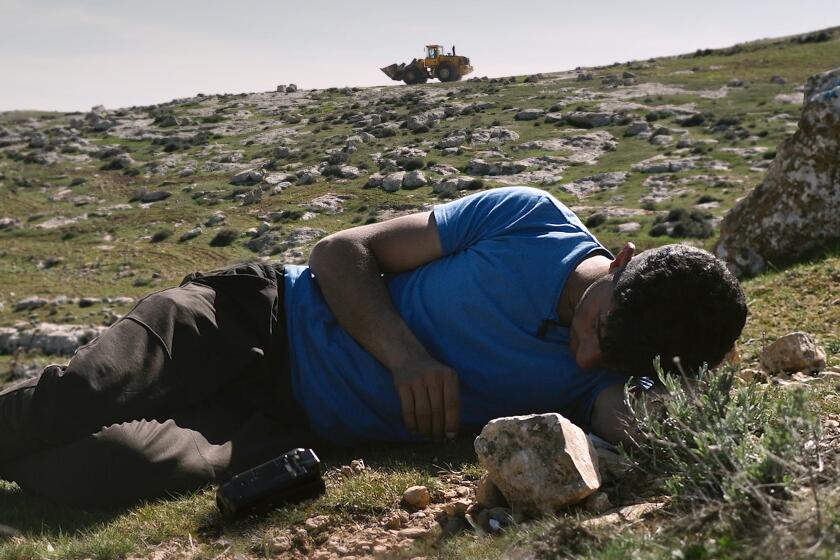AFTER THE HOLOCAUST
- Share via
I was very surprised to see my father in the picture of demonstrating Jewish displaced persons in the article on “The Long Way Home” (“Capturing the Pain and the Promise of Jewish History,” by Kristine McKenna, Sept. 21). My father is the bearded, uniformed man standing in front of the movie cameraman.
He was Rabbi Alexander S. Rosenberg, from Yonkers, N.Y., religious advisor to Gen. Lucius Clay, military governor of Germany right after the war. He worked for the Joint Distribution Committee under the United Nations Relief and Rehabilitation Administration and devoted his energies to helping the many Jewish survivors of the Holocaust reestablish their religious lives in the DP camps created in Germany after the war. He also helped them make contact with relatives abroad, especially in the U.S., and assisted them in their efforts to emigrate from Germany.
This film will be a personal remembrance of his tireless work in Germany from August 1945 to December 1948.
ARTHUR M. ROSENBERG
Santa Monica
*
Kristine McKenna owes an apology to the U.S. Army for stating that it ran “ ‘displaced persons’ camps . . . where conditions weren’t markedly better than they’d been in the concentration camps.” What an ignorant, misinformed comparison!
I was a displaced person from Poland via the Soviet Union and my wife via the German concentration camps. We arrived at the displaced persons camp in 1946, where I was employed by the UNRRA and later by the International Refugee Organization, which, to my knowledge, were the institutions that administered the camps, not the U.S. Army.
LEON LIVINGSTON
Studio City
*
I want to clarify my comment about nothing significant being done to remember the Holocaust from 1945-79. By that I meant, of course, through the expenditure of public funds, as opposed to what the Hollywood studios were doing (“Diary of Anne Frank,” “Judgment at Nuremberg”).
Additionally, let me correct the impression that the Rabbinic debate of whether to commit the Talmud to writing took place after Gutenberg’s invention of the printing press. That debate, of course, preceded Gutenberg by well over 1,000 years.
RABBI MARVIN HIER
Dean and Founder
Simon Wiesenthal Center
Los Angeles
More to Read
Only good movies
Get the Indie Focus newsletter, Mark Olsen's weekly guide to the world of cinema.
You may occasionally receive promotional content from the Los Angeles Times.










